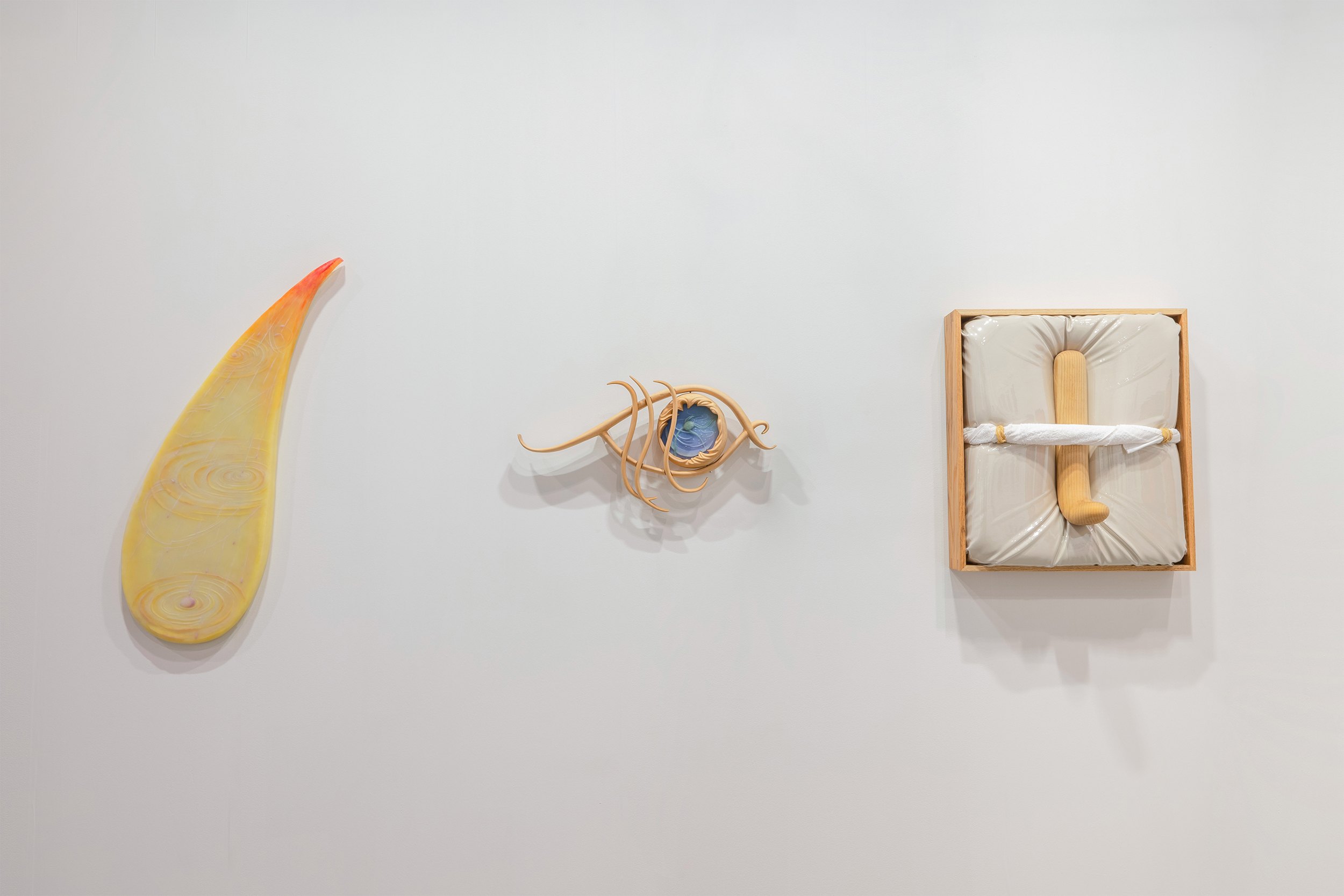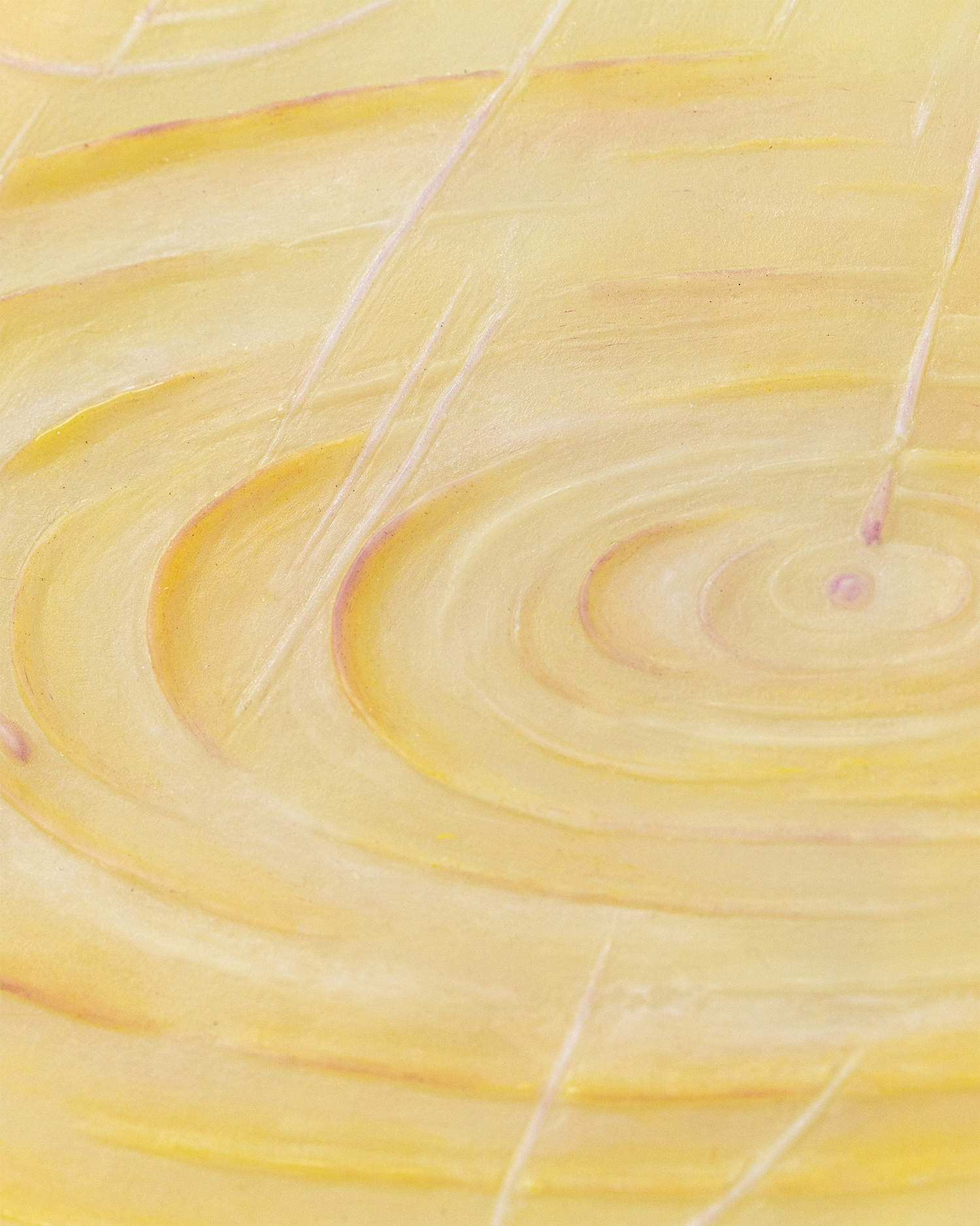
In Between
Capsule Shanghai
Art Basel Hong Kong 2022 | Satellite Booth 1C32
2022.05.25- 2022..5.29
Artists:
Cai Zebin
Gao Yuan
Liao Wen
Rieger Douglas
之 间
胶囊画廊
巴塞尔艺术展香港展会2022
|卫星展位 1C32
2022.05.25- 2022..5.29
艺术家:
蔡泽滨
高源
廖雯
道格拉斯·莱杰
Capsule Shanghai is pleased to present “In Between” at
Art Basel Hong Kong, a group project featuring paintings, works on paper and
sculptures by artists Cai Zebin, Gao Yuan, Liao Wen and Douglas Rieger. The
show leads an inquiry into the existence of bodies, or absence of, in revealing
traces of human gestures that form our morphing and shifting identities in the
fluid relationship between internal and external being. It strings together
in-between spaces of dreamlike auras and emerging figures wandering in an acute
process of questioning the self and thus revealing self. There is empowerment
in the vulnerable state of settling in one’s gaze and body; a sinking into and
embracing of one’s fluctuating identity in an act of self-discovery.
Rooted in the lineage of surrealism, Cai Zebin’s
paintings delves into art history’s time-honored subjects and motifs – from
Henri Rousseau’s flute-playing snake charmer (The Snake Charmer, 1907)
and distorted burning candles, to The Meeting at 2bis, rue Perrel (1946)
by Victor Brauner – in illustrating Cai’s first-hand experience of being a
painter. All artworks are self-referential by nature for they are the
manifestation of the artist’s thinking, feeling and doing. On the other hand,
the figures in the form of palettes and easels, a signature feature in Cai’s
recent paintings over the past several years, are indications of the painter’s
appearance in his own work. The paintings not only can be seen as
self-portraits; they are dialogues between the contemporary painter and his
great predecessors across time and space.
Gao Yuan draws inspirations and motifs from her personal
experiences that begin in reality but manifest in transient dreams. The images
continue to serve as backdrops for Gao Yuan’s ambitious project in-progress, a
feature length film. The permanence of light glows from within the painted
surface against the fleeting moment depicted within the picture frame. The
works follow the eyes of a wanderer peering into the vast world, caught in an
atmospheric gaze of lucid dreams against the backdrop of a tangible reality and
decrepit couches.
Bodily suggestive carved wooden forms pressed into vinyl
wrapped upholstery, the anthropomorphic ‘soft reliefs’ by Douglas Rieger
juxtapose industrial and domestic materials such as upholstery foam, towels,
show laces and rubber bands. The polished surfaces evoke bits of physical
intimacy through the hands of a sculptor toying with form, dimension, and
elegant figuration channeled into the abstract. Each work is a short visual poem
about a personal feeling or relationship, imagined or real, in memory of a
fleeting moment in everyday life – from a locker room scene or a cigarette
break to promises from friends and strangers. Like writing can be for some
poets, these works are termed ‘soft reliefs’ because – besides it being a
forthright observation of the physical qualities of the works – they are a
remedy of emotional pressure for their maker, and evoke an easement of tension from
the viewers.
Liao Wen reanimates ancient tales to create alluring
forms split between day and night beginning with an ancient Egyptian spice,
cyphi, lit in dedication of the night, and soma, a yellow ritual drink found in
the Indian text Rig Veda to welcome the sun’s rays. The familiar forms
are imbued with expansive spaces where an eye reflects the moonlight and
raindrops disintegrate in calmness within a universe. The subjects appear to
float forever in a dream-like state and complicate the feverish experience of
reality as mementos of the contemporary relevance of rituals.
Each of the artists
illustrate the nuances of one’s identity and in-between spaces of self within
internal and external worlds. Collectively, the work transverses the many lines
that exist between them to posit self as an ever-shifting self-awareness to
explore.
胶囊上海荣幸在巴塞尔艺术展香港展会呈现群展“之间”,包括蔡泽滨、高源、廖雯以及道格拉斯·莱杰的绘画、纸本和雕塑作品。艺术家们通过揭示种种人类姿态的印迹,引导出一次对身体的存在与缺失的探究,这些姿态在内在与外在的流动关系之间组成了我们变化多端的身份。作品构筑起一个如梦境般的中间地带,忽隐忽现的人物形象在自我怀疑和自我揭示的洞悉过程中漫游。潜入自身的注视和身躯固然使人处于一种脆弱的状态,但如若能够安然幽居其中,却不失为一种赋能。沉入并拥抱自身波动不定的身份即是一种自我探索的行为。
蔡泽滨的作品植根于超现实主义的传统,对艺术史上历久弥新的主题和意象进行了深度的探究和重构,从亨利·卢梭描绘的吹笛子的耍蛇人(《耍蛇女》,1907)和扭曲的蜡烛,到维克多·布劳纳的《佩雷尔街2号的相遇》(1946),对这些作品进行重访和解读的过程也是蔡泽滨描绘他自身作为画家的个人体验的过程。自然,一切艺术品都有着与生俱来的自传性,因为它们是艺术家的思想、感受和行为的体现。另一方面,蔡泽滨近年来的绘画中标志性的画板和画架形态的人物,也明示了画家本人在画面中的存在。由此,这些作品不仅是艺术家的自画像,也是蔡泽滨与深刻影响了他的历史上的画家的超时空对话。
高源作品的主题源自于她始于现实却显应于即逝梦境中的个人经历。秉承她长期以来的创作方式,这些绘画作品也将作为镜头的背景出现在她正在创作的长篇动画电影中。高源独具风格的光影处理方式在这些作品中可见一斑,画面中的光线仿佛从画布之下向外发散,照亮稍纵即逝的瞬间。作品跟随一个漫游者的眼睛游移于广阔的世界,以仿佛触手可及的现实为背景,带领我们进入一场清醒梦——在睡眠状态中保持意识清醒,梦中人的意识介于现实与梦幻之间。
在道格拉斯·莱杰的“软浮雕”(英文原文为soft relief,其中relief一词有“浮雕”和“释放”两种涵义)中,暗示人体的木质结构嵌入透明塑胶包裹的柔软的家居装饰品衬垫,衬垫海绵、毛巾、鞋带和橡皮圈等工业与日常生活材料在此被出其不意地并置。莱杰作品中打磨光亮的表面唤起了些许亲密感,雕塑家之手把玩着形态、尺幅,将具象的形态巧妙优雅地抽象化。每件作品都是一首视觉的短诗,吟诵着艺术家或真实或臆想的丝丝缕缕的感受和羁绊,献给日复一日中某个转瞬即逝的片刻——更衣室的一幕,抽烟的几分钟,朋友和陌生人的诺言。就像写作对一些诗人来说是一种疗愈,这些作品之所以被称为“soft relief”,除了可作“柔软的浮雕”解之外,也因它们对其创作者和观者来说是都一种舒缓的压力释放。
廖雯将古老的神话提炼成雕塑中优美神秘的形态,诉说恒古的日与夜——从古埃及人在夜晚点燃的香料cyphi,到印度《梨俱吠陀》中金黄如太阳光芒的神圣饮剂苏摩(soma)。瞳孔倒映月光,雨滴坠入宁静宇宙。熟悉的事物和形象幻化出广阔的时空,仿佛恒久地漂浮于梦境之中,又像是一个纪念品,在复杂的现实中提醒着仪式的当代意义。
展览中每一位艺术家都以自己的方式着眼于个人身份的幽微奥妙,以及自我于内在与外在世界之间的中间地带。这些作品跨越了它们之间的种种界限,共同将自我设想为一种不断变化的自我意识来探索。





Seeds of the night sky / 夜空的种子 | 67x35x11cm| 硅胶、椴木/ Silicone, limewood| 2022
The work Seeds of the Night Sky is
inspired by cyphi, a compound incense that was used in ancient Egypt. The Greek
philosopher and historian Plutarch, in his book Moralia, describes that
“of the ingredients which compose cyphi, there are some which delight more in
the night, that is, those which are wont to thrive in cold winds and shadows
and dews and dampness… The air at night is a composite mixture made up of many
lights and forces, even as though seeds from every star were showered down into
one place… The cyphi, since it is compounded of ingredients of all sorts
of qualities, they offer at nightfall.”One of the ingredients in cyphi was Acorus calamus, featured in the center of
the sculpture. The word ‘acorus’ is derived form the Greek word ‘coreon’, meaning
pupil.
The eye reflects moonlight;
the seeds are fallen stars.
作品生发于cyphi,它是古埃及的一种神圣香料,常常在夜晚降临时被点燃,献与夜幕。古希腊哲学家和历史学家普鲁塔克在他的著作《道德论集》(Moralia)一书中详述,cyphi的组成物喜爱夜晚,习惯生长于有冷风、阴影、露水的潮湿之处。菖蒲是cyphi中的一种植物,其属名来自于希腊文的“瞳孔”(coreon)一词,亦是这件作品瞳仁中央的植物原型。
目光映出月色,种子宛若坠落的繁星。




Oneness| 103x37x4cm| 硅胶、椴木/ Silicone, limewood| 2022